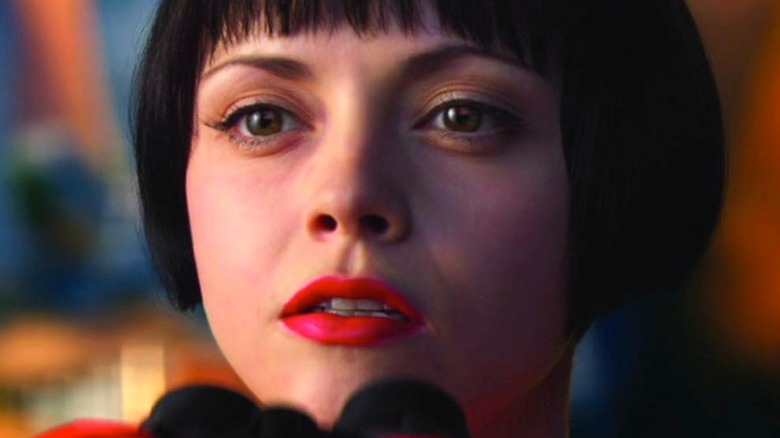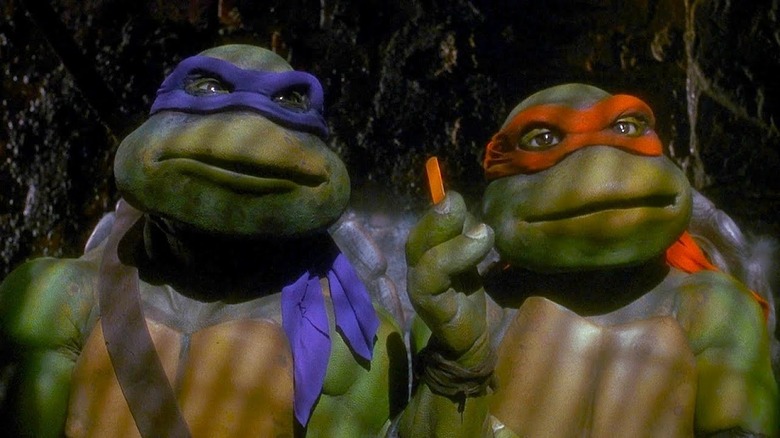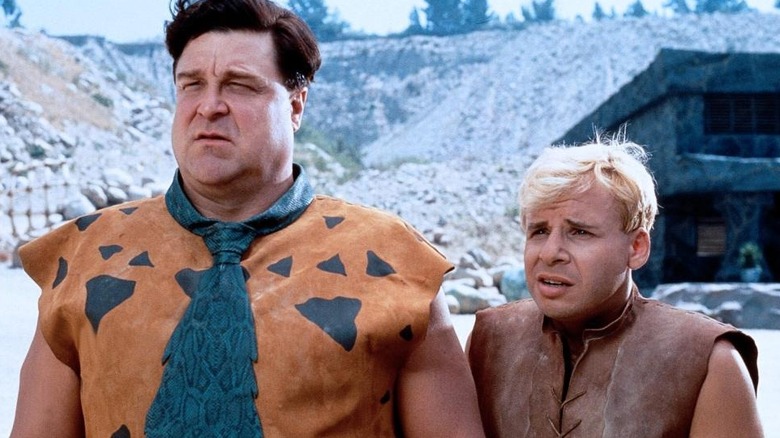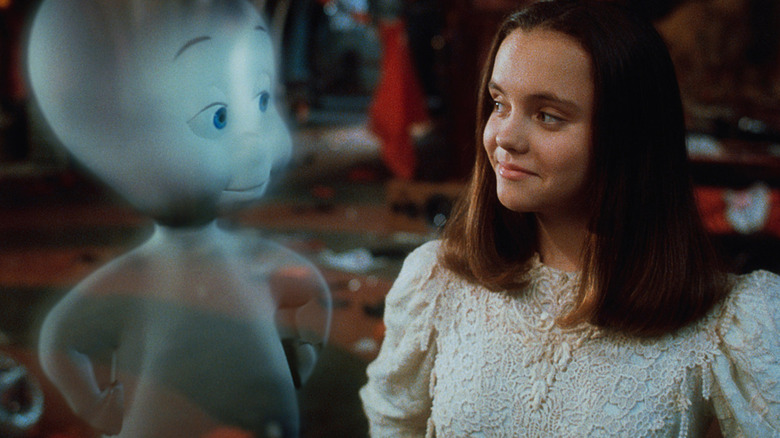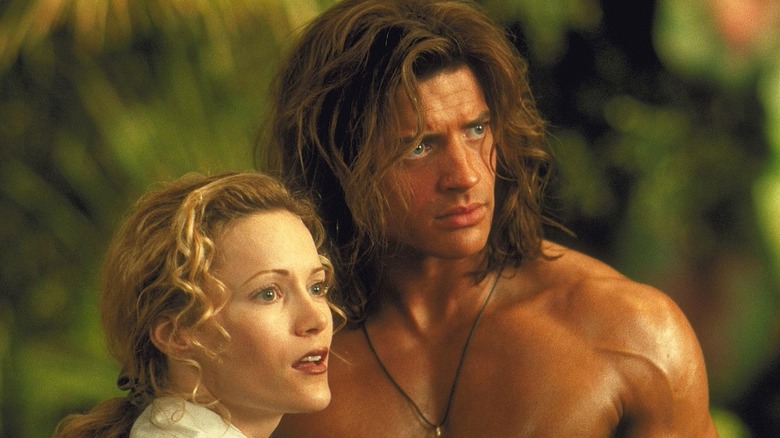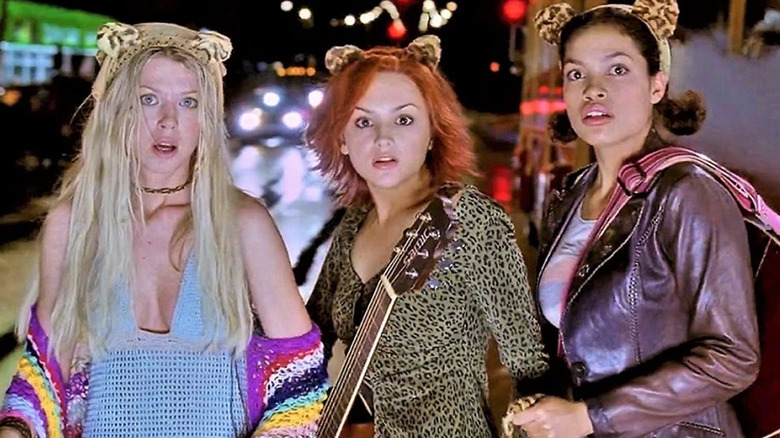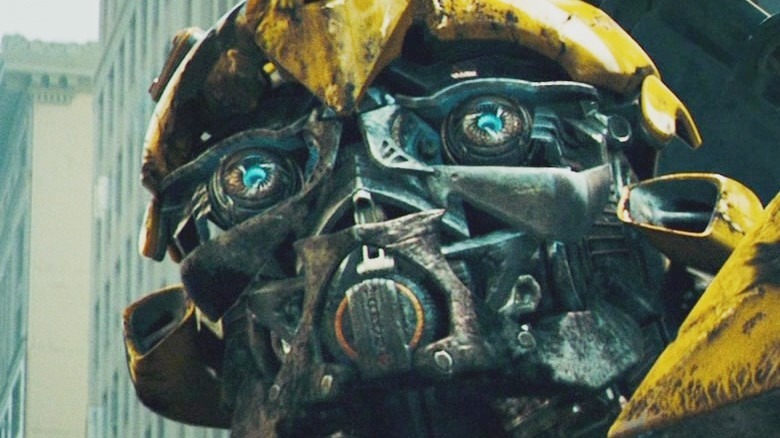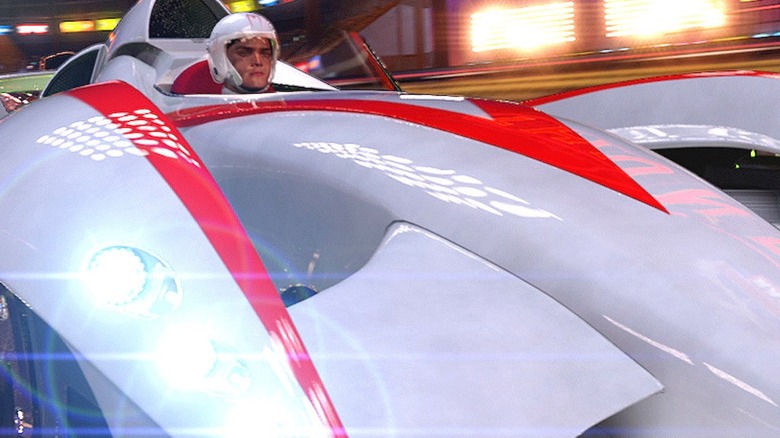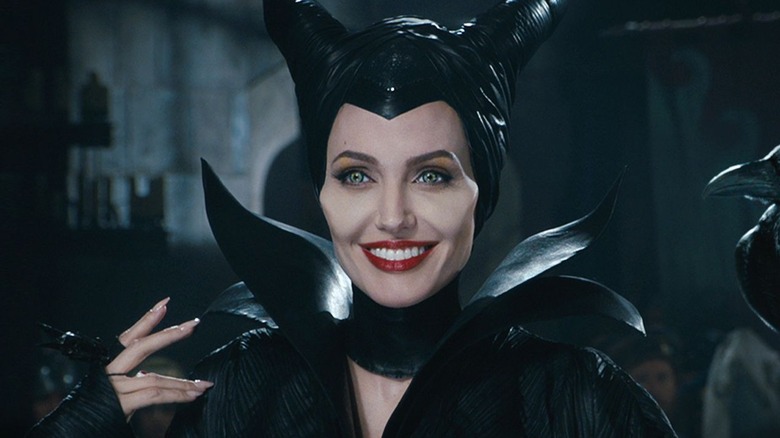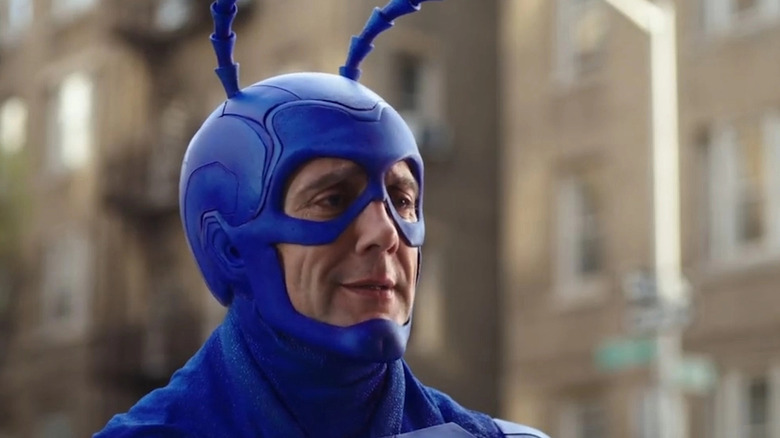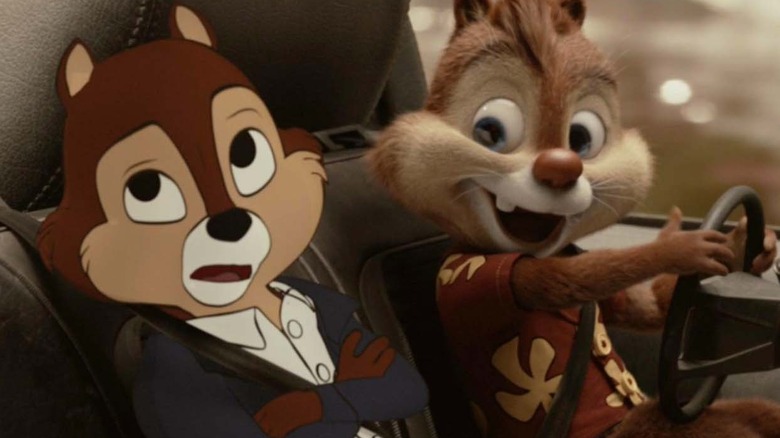Live-Action Films That Are Better Than Their Animated Counterparts
Live-action adaptations of animation are nothing new. In fact, there was even a live-action "Popeye" movie (starring Robin Williams as the squinty-eyed sailor and Shelley Duvall as Olive Oil) produced over 40 years ago.
More recently, live-action adaptations of animated properties have become nearly ubiquitous, especially Disney's insistence on producing assembly line live-action reboots of all their animated features — such as 2016's "Jungle Book," 2017's "Beauty and the Beast," and 2023's "The Little Mermaid" — as well as Netflix's foray with live-action streaming shows based on popular anime, like 2021's "Cowboy Bebop" and the upcoming "One Piece."
Unfortunately, most live-action adaptations of cartoons are worse than their animated source material, because they often lose whatever made the original special in the first place. There is a special artistry to animation that allows for hyper-real — or even surreal — exaggeration of form and movement, which largely goes underappreciated in Hollywood (for instance, there's a separate animated feature Oscar, which all but segregates the art form). Furthermore, the comparative reality of live-action productions either doesn't allow for the kind of zaniness needed for the material (like 2019's "The Lion King"); or conversely its insistence on representing the cartoon's aesthetics in real life comes off as tacky and off-putting (like the 2002 "Scooby-Doo" film).
However, there are (very) rare examples of a live-action adaptation actually superseding its animated original — even if only barely. And those examples can be seen below.
Teenage Mutant Ninja Turtles
"Teenage Mutant Ninja Turtles" was a phenomenon in the late '80s and early '90s. It all started with an indie black-and-white comic book created by Kevin Eastman and Peter Laird that was not-so-secretly a parody of "Daredevil" (with the ooze that gave Matt Murdock his powers being the same ones that gave the titular turtles theirs, via TeenageMutantNinjaTurtles.com).
The story of "TMNT" follows four teenage turtles who are also mutant ninjas — each named after Renaissance artists — who were trained by a mutant rat sensei named Splinter, fighting crime in New York City. While the Ninja Turtles actually have an impressive rogue's gallery of enemies, their main adversary is Shredder, an imposing supervillain with spiked armor who commands The Foot Clan — another nod to Daredevil's ninja enemies, The Hand.
The property then spun out into everything from a popular cartoon show, to top-selling action figures, to classic video games, to a breakfast cereal, and more. They also made a live-action feature film in 1990. It was directed by Steve Barron ("Coneheads"), who enlisted the help of the Jim Henson company's state-of-the-art animatronic turtle suits — which pretty much still hold up today (certainly more than the CGI versions from the recent Michael Bay-produced reboot).
It also improved on pretty much everything from the cartoon, since it was based more on that than the original comics (mainly due to the fact in the original comics all the turtles had red masks, instead of multi-colored ones.) The film was refreshingly dark and gritty, with some awesome fight choreography — made even more impressive due to the cumbersome suits.
The Flintstones
Steven Spielberg has shown interest in classic animation, having spearheaded the '90s TV animation revival with the likes of "Animaniacs" and "Tiny Toons Adventures." He also produced the live-action adaptation of "The Flintstones" in 1994.
The original "Flintstones" cartoon, which initially ran from 1960 to 1966, was historically significant for being the first animated sitcom to air on prime time — beating out "The Simpsons" by almost three decades.
The live-action film, meanwhile, was helmed by "Jingle All the Way" director Brian Levant, and stars John Goodman as Fred Flintstone, Elizabeth Perkins as Wilma Flintstone, Rick Moranis as Barney Rubble, and Rosie O'Donnell as his wife, Betty Rubble. While there was some controversy about some of the casting choices — and some missed opportunities (for instance, Danny DeVito was Spielberg's first choice for Fred, via Vulture) — the live-action cast does a great job with the classic roles nonetheless. The new characters created specifically for the movie, like the villainous Cliff Vandercave, played by David Lynch-mainstay Kyle MacLachlan, and an early role for Halle Berry as Sharon Stone, were fun as well.
What's really great about "The Flintstones" live-action film, though, is the absolutely superb production design. Everything looks straight out of the cartoon, which gives it a unique aesthetic. They even found a way to make the foot-powered car not look completely ridiculous.
Casper
In hindsight, Casper the Friendly Ghost is kind of a morbid concept for a children's cartoon character. Originating as the star of animated theatrical shorts in 1945, and later in the pages of Harvey Comics a few years later, Casper is the story of a literal dead child that is now a ghost, who finds himself getting into supposedly side-splitting supernatural shenanigans, accidentally scaring people away while trying to make friends.
Unfortunately, Casper was always super saccharine, and never really the most exciting or interesting character — despite the whole dead kid thing. Steven Spielberg decided to adapt the property into live-action in 1995. And, against all odds, "Casper" — directed by Brad Silberling ("City of Angels") — was both a critical and financial hit (via Box Office Mojo).
Part of the reason for its success was that it pushed the limits of CGI at the time, and in fact, was the first live-action film to have the main protagonist be an entirely computer-generated effect. It also surprisingly acknowledged the deeply macabre underpinnings of Casper's existence head-on, dealing with deep and dark themes of death, loss, and acceptance.
The cast was great too, particularly Christina Ricci taking what could've been just a stock '90s alt-girl cliché, and giving her true humanity and pathos. Her scenes with the CG Casper are also genuinely touching. That includes their kiss at the end of the film, which feels completely earned, but could've easily come off as cloying or goofy with a different actor in the role.
George of the Jungle
Brendan Fraser has been granted a recent career resurgence lately, which is well-deserved. He's starred in some magnificent films and put in some amazing performances, and while it would be tough to claim 1997's live-action adaptation of the "George of the Jungle" cartoon as "magnificent," it wouldn't be too big of a swing to praise Fraser's performance as amazing. While the live-action "George of the Jungle" movie wasn't a critical darling, it's still much better than it has any right to be, especially given its source material. And a big part of that success is definitely due to Fraser's committed and fun performance as the eponymous George.
"George of the Jungle" itself began as an animated parody of Tarzan, created in 1967 by Jay Ward and Bill Scott of "Rocky and Bullwinkle" fame (which also got a live-action film ... but the less said about that one, the better ...)
"George of the Jungle," meanwhile, stars the aforementioned Fraser as George, but also has a stacked cast co-starring alongside him, with Leslie Mann playing his love interest Ursula Stanhope, Thomas Haden Church as the snooty imperialist villain, and Monty Python's John Cleese as the voice of George's talking gorilla butler (and impressive animatronic effect) named Ape. The humor, like the show, is also very irreverent, metatextual, and — unlike the show — often hilarious. Even when the jokes don't quite land, the cast commits nonetheless.
Josie and the Pussycats
"Josie and the Pussycats" began as a rockin' girl band trio from Archie Comics, making their debut in 1963. The girls were originally dressed in skintight and revealing leopard-skinned outfits, with fake cat ears over their heads. Afterward, they even got their own short-lived and cheaply-made cartoon from Hanna-Barbara in the early '70s.
Then, in 2001, Universal Pictures and MGM released the live-action "Josie and the Pussycats" film. It starred Rachael Leigh Cook as the eponymous Josie, while Rosario Dawson and Tara Reid starred as the other two bandmates, Valerie and Melody, respectively. The story revolved around the Pussycats being a small-town band who are eventually discovered by evil music promoter Wyatt Frame (in a delectable performance by Alan Cumming) to play songs with mind-controlling subliminal messages. This is after Frame attempted to kill the boy band he originally signed, DuJour, played by Seth Green, Breckin Meyer, and Donald Faison.
What's great about the film is how unsubtly anti-capitalist it is, with the subliminal messages the Pussycats are singing turning out to be advertisements for big companies. It also hints at how everything is connected and vertically-integrated, and that the "free will" and supposed plethora of choices are actually false, and are instead mass-marketed by powerful conglomerates (via U.S. News and World Report).
Also, the songs the band plays, produced by artist Babyface, are certified bops. In fact, the album went to No. 16 on the Billboard Soundtrack charts (via Pitchfork).
Transformers
The "Transformers" series is based on a brand of toys from Hasbro about two warring factions of giant, sentient robots — dubbed the Autobots and Decepticons — who find themselves crash-landed and fighting on Earth. They then attempt to hide from humans by transforming themselves into vehicles and other objects. For instance, the heroic leader of the Autobots, Optimus Prime, turned into a big rig, while Decepticon leader Megatron transformed into a gun.
In the '80s, "Transformers" got an animated cartoon show to sell children's toys, once President Ronald Reagan deregulated children's programming and allowed corporations to advertise directly to kids — which had been illegal up until then (via The New York Times). The show became very popular soon after.
Decades later, in 2007, Steven Spielberg returned once again to produce a live-action adaptation of a beloved animated series, tapping action maestro Michael Bay to direct it. The film starred Shia LaBeouf, Megan Fox, and John Voight, and brought back Peter Cullen to return to voice the heroic Optimus Prime. Meanwhile, Frank Welker — who had voiced Megatron — was replaced by Hugo Weaving.
We won't be arguing that the live-action "Transformers" film was good, per se, but rather that it's at least better than the borderline incoherent original series, as well as the atrociously cheesy '86 animated feature-length film (which has Weird Al unironically on its soundtrack). Also, say what you will about Bay, but he sure knows how to frame a cool explosion.
Speed Racer
"Speed Racer" was a Japanese animated cartoon (aka "anime") — originally titled "MachGoGoGo" — that debuted in Japan in 1967, and then came to the U.S. as a re-dubbed version around the same time. The show itself followed the adventures of the world-famous racer, the aforementioned serendipitously-named Speed Racer, who raced in deadly tournaments, oftentimes against criminals and supervillains.
In 2008, the Wachowskis followed up their massively successful "The Matrix" series with a live-action "Speed Racer" film, which was a passion project for them and producer Joel Silver. Their version is actually a great distillation of the show's essence, as it is about the eponymous Speed Racer (Emile Hirsch) as he runs afoul of a rich business magnate. Like a lot of Wachowski properties, the film has a welcome and unambiguous anti-capitalist streak, with Speed's love of racing becoming a metaphor for artistic freedom against oppressive and controlling corporate interests. It's disappointing the film didn't initially catch on in its original run (via Box Office Mojo) — but luckily it found an immense and deserved devoted cult following, proving its thesis right in a roundabout way.
For another thing, more so than the original anime, the live-action version is brimming with beautiful, colorful, and unique imagery. Even better, it's able to simulate the visceral movement of speed throughout — leaving you at the edge of your seat, especially with its patented "car-fu" sequences. Even better, the sincere performances — especially from John Goodman and Susan Sarandon as Speed's parents — ground the fantastical imagery into something meaningful and human.
Maleficent
It can be said that Disney's current trend of pilfering their animated film vault to give them the live-action treatment began in earnest after the massive dual successes of Tim Burton's "Alice in Wonderland" film, and the Angelina Jolie-led "Maleficent." However, unlike Burton's "Alice in Wonderland" — which was considerably worse than the animated film it was ostensibly based on, and even then only vaguely related to it (with Mia Wasikowska's Alice being the only character baring any resemblance to her cartoon counterpart) — "Maleficent" was instead directly tied to 1959's "Sleeping Beauty," where Maleficent was the main, demonic antagonist.
Though, unlike the recent deluge of live-action Disney remakes — which are basically just longer and more tedious retellings of the originals, with gaudy CGI characters and badly composited green screen — "Maleficent" is refreshingly a deconstructionist film, which recontextualizes the animated "Sleeping Beauty" film to give more backstory and motivation to the eponymous sorceress, played by the aforementioned Jolie.
Released in 2014, and directed by Robert Stromberg in his feature directorial debut, "Maleficent" is a far more interesting and morally-ambiguous take on the "Sleeping Beauty" tale. Rather than being a simple morality tale of good vs. evil, it is instead about opposing systems that prop up entrenched corruption, as well as the power of seeking redemption and forgiveness.
Also, if nothing else, Jolie absolutely kills it as Maleficent — even with those goofy angular cheekbone prosthetics.
The Tick
"The Tick," the nigh-invincible and super-strong — but also super-dense and naive — blue-spandexed hero, first debuted as an indie comic in 1986 by writer/creator Ben Englund. The comic eventually spawned an amazing and quirky cartoon on Fox, which debuted in 1994, becoming a lasting cult favorite due to being weirder and more eccentric than most other cartoons at the time. In 2001, "Men in Black" director Barry Sonnenfeld produced and directed the pilot for a live-action "The Tick" series, again on Fox. The show starred Patrick Warburton as the titular Tick, with David Burke as his sidekick Arthur. The show had a much more adult take on the material and was essentially "Seinfeld" with spandex.
However, while the comic and both adaptations were great in their own right, the best "The Tick" adaptation is actually the live-action Amazon series that ran for two seasons from 2016 to 2019. Unlike the other adaptations, the main focus was thoroughly on Tick's sidekick Arthur, played in this version by "Blank Check" podcast co-host Griffin Newman. It also was riffing on the "grim and gritty" era of superhero media — such a Netflix's "Daredevil" series — and decided to skewer it. What's amazing about Amazon's take on "The Tick" is that while The Tick himself — this time played by Peter Serafinowicz — is still the goofy and dim-witted do-gooder from every other iteration — the world around him is dark, violent, and even genuinely tragic. That contrast is where most of the humor comes from, and while that's a delicate tonal tightrope to navigate, the show manages to do so with aplomb, making it unique among other superhero shows.
Chip 'n Dale: Rescue Rangers
"Chip 'n Dale: Rescue Rangers" began as animated series from 1989 to 1990 about two adventuring chipmunks — Chip, based on the look of Harrison Ford's iconic Indiana Jones, and Dale, based on the laid-back look of Tom Selleck in "Magnum P.I." And while the "Chip 'n Dale: Rescue Rangers" cartoon series was fun — if pretty standard — fare, the movie is a darkly cynical and metatextual re-imagining of the series.
In 2022's live-action "Chip 'n Dale: Rescue Rangers" reboot, it's revealed that Chip and Dale are actually just actors (voiced by Andy Sandberg and John Mulaney) who played characters on the show. They then have a falling out, leading to Chip (Mulaney) working at a boring office job, and Dale getting CG surgery to stay relevant in the entertainment industry. However, both of them eventually get caught up in a corrupt police and bootlegging/cartoon trafficking plot that they have to work together to get out of.
What's great about the film is there are a lot of animation-specific sight gags, such as a billboard advertisement for Senator Butt-Head from "Beavis and Butt-Head," or Peter Pan growing up and resenting it. Even better are all the insular jokes about the animation industry itself, such as the bad neighborhood of weird CGI characters (with feral cats from 2019's "Cats"), and the big plot being about weird DVD knock-off films.
Also, "Ugly Sonic" (voiced by Tim Robbins) alone makes the film worth at least one viewing.
